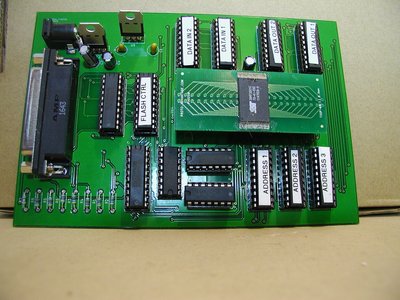Reply 1240 of 3172, by jxalex
Great job to those who made the Gravis clone work. I admire. I arrived too late to the party, otherwise I could also been help to clear up about the data about the AMD chip and such. About a year ago I thought myself too about this, but I do not search in a net so much.
Those who are handy can build themself a good expandable and experimental programmer so you get past the LPT pin port toggling. Imagine that you have several of the LPT ports to toggle like 4 for output and 4 for input?
The simplest steps first:
Based on this idea here which I found
https://abhishekdutta.org/interfacing-with-the-isa-bus/
You can get a 8bit simple ISA card.
All components easy to get hands on!
(I developed on as a 16 bit ISA card version though with 1WS and can work with undocumented 0WS for a write operation on 486). For this I/O board I made on top myself a programmer/dumpreader. Mine is a 8x8 port version and I also tested the russian chips like K555ID7 for adress decoders and it works also great with K155 series. 😉
it can be good start for any other good things even for many debuging/testing purpose and development tool, but also elementary as a custom flash programmer.
Current project: DOS ISA soundcard with 24bit/96Khz digital I/O, SB16 compatible switchable.
newly made SB-clone ...with 24bit and AES/EBU... join in development!
